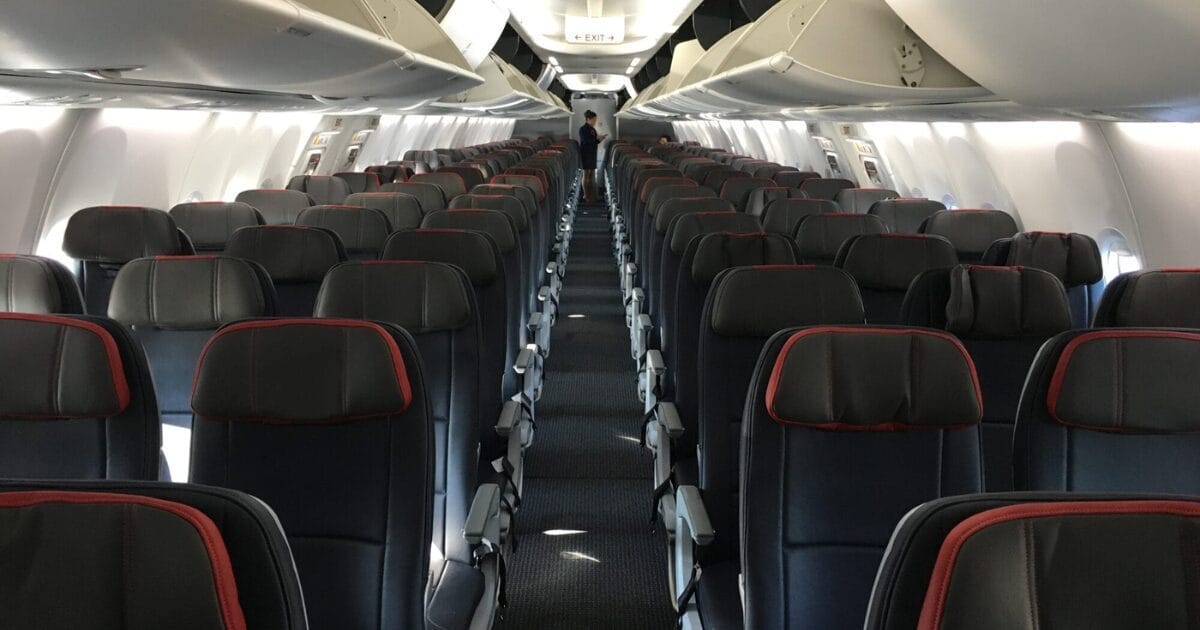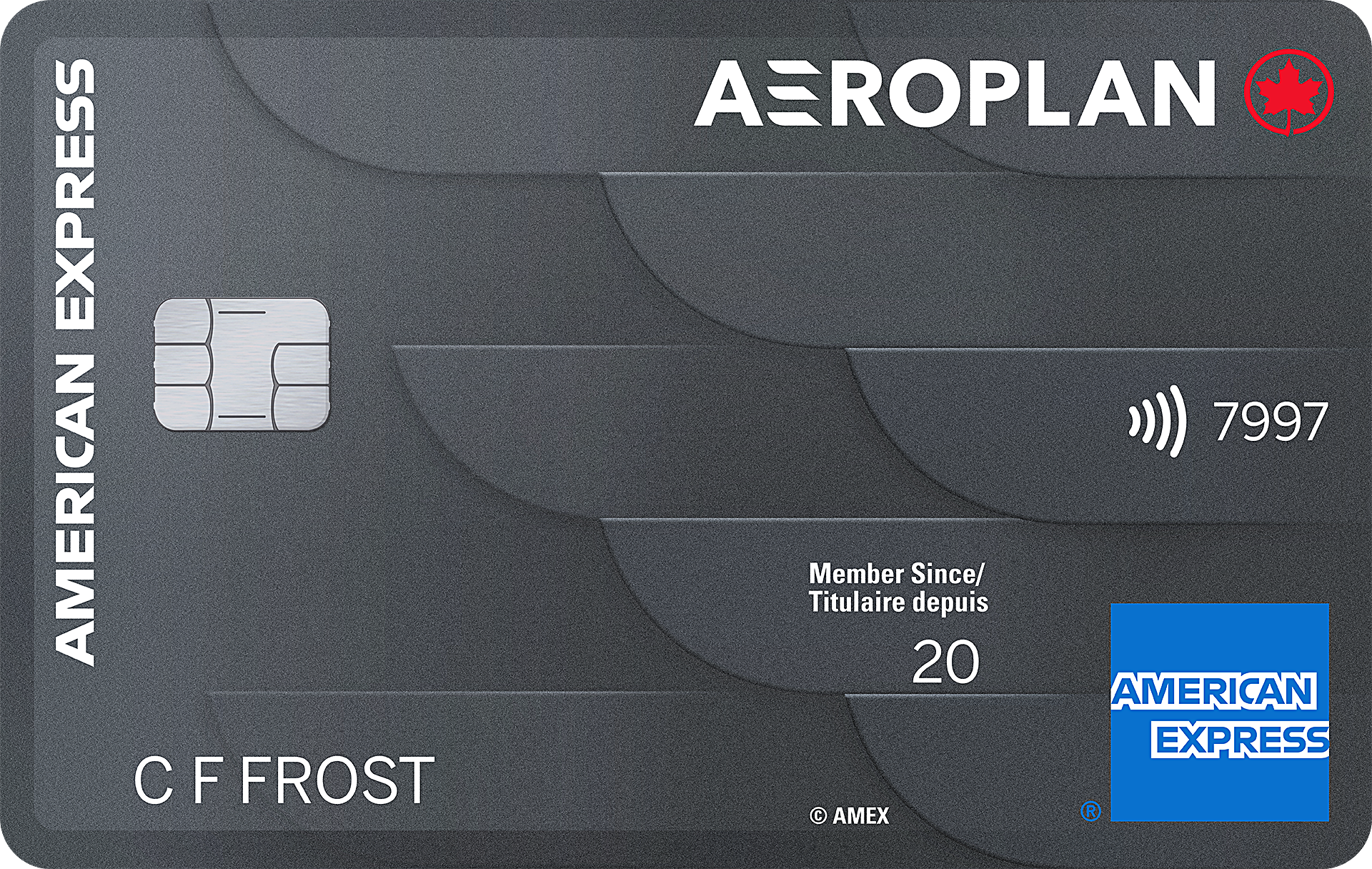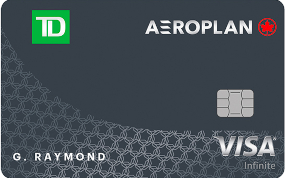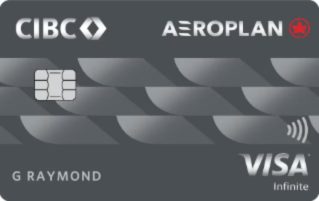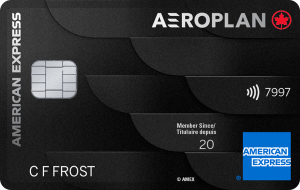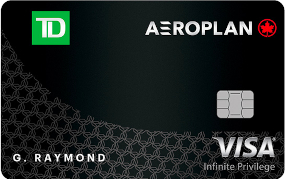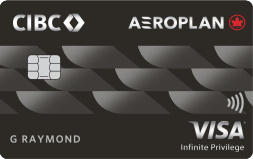Almost all airlines in the world offer different fare classes when purchasing a plane ticket. These are options that give you different inclusions and conditions, even if it’s exactly the same seat class. It’s wonderful: it allows you to choose the extras you want to pay for.
Most travelers are aware of airplane seat classes (although many don’t know that first class and business class are 2 very distinct things). These are the different sections in the plane where the experience is very different.
But there are still many people who don’t know what plane ticket fare classes are — and it’s the most basic thing to understand the new carry-on baggage policies from Canadian airlines (the next part of this series of posts).
Here is what you need to know about plane ticket fare classes.
Basics — Plane ticket fare classes
It’s important to understand seat classes and fare classes, because the names of the specific classes are similar and can be confusing.
For example, let’s take the 2 most recent additions and how they’re often called. There’s basic economy class, which is a fare class. And there’s premium economy class, which is a seat class.
Here are the basics of plane ticket fare classes:
- Different options available
- For the same seat class
- Offered when purchasing a plane ticket
- You’ve certainly already seen this
- Price can vary quite enormously
- From simple to quadruple, even
- Number of fare classes can vary
- There can be 5 in economy class
- And sometimes just one (so no choice to make)
You may not have known they were called fare classes, but honestly, you should really know what a fare class is if you’ve ever booked any plane ticket in your life.
On any airline’s website, it’s humanly impossible to miss the fare classes when you book a flight. When you choose a seat class, you automatically see the fare class options, and you’re required to choose one.
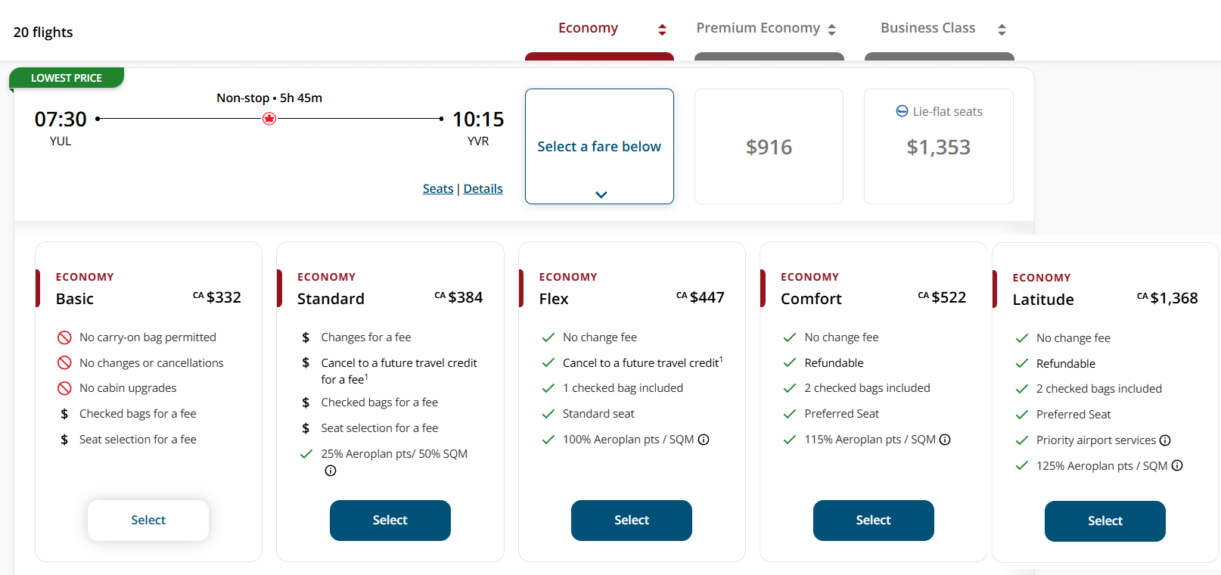
Note that in addition to seat classes and fare classes, there are also booking classes.
This isn’t relevant for most travelers, but it will be a separate article soon to continue learning aviation basics. There’s a preview in my article on the SAS promotion for 1 million points from this fall.
Existing options — Plane ticket fare classes
There are travelers who want to fly at the lowest price (to travel more often or just to save) and there are travelers who want lots of various extras. Fare classes exist to not force everyone to pay for services they don’t want to pay for.
Basically, when you choose a fare class, you choose what’s included in your plane ticket. It’s not really more complicated than that.
Here are the existing options from one fare class to another:
- Full-size carry-on bags
- Checked bags
- Change option
- Refund option
- Seat selection
- Upgrade option
- Rewards earning
- Elite status qualification
- Priority services
We’ll look at each in detail below, but the main elements to look at for the vast majority of travelers are the bags included for “free” and the flexibility of the ticket.
It seems that for a lot travelers, the greatest love story of their life is with their beloved bags… even though traveling light (#teamcarryon) is what all flight pros do (it makes travel so much more affordable *and* more enjoyable). However, now it’s sometimes only the small bag that goes under the seat in front of you that’s “free” (i.e. *included in the price*).
And for changes and refunds, honestly, it often doesn’t make sense to pay more for flexibility, as many people unfortunately do. By paying with a good credit card, you have completely free trip cancellation insurance that covers you if you have a good reason to cancel.
Variations — Plane ticket fare classes
Before looking at the different inclusions of plane ticket fare classes, there are a few other things to know.
Here are the variations regarding plane ticket fare classes:
- They have varied names from one airline to another
- Like seat classes
- They vary from one airline to another
- Like seat classes
- They vary from one destination to another (on the same airline)
- Like seat classes
Fare class names vary even more than seat class names — and they’re just as irrelevant. What matters is understanding the principle and reading the specific inclusions. Usually, there’s often a standard fare class, a more basic one, and a more flexible one. But it varies a lot!
Fare classes obviously vary from one airline to another. We’ll look at this by airline in a separate article soon, but for domestic and U.S. flights in economy class, Air Canada has 5 fare classes, Porter has 4, WestJet has 3, and Air Transat has 3.
Finally, what’s most confusing is that fare classes (and their inclusions) often vary depending on the destination, even on the same airline. Generally, it’s different between short-distance and long-distance flights.
Full-size carry-on bags — Plane ticket fare classes
Depending on the fare classes, full-size carry-on bags may not be included.
There are 3 very different inclusions regarding full-size carry-on bags:
- Full-size carry-on bag not allowed (even by paying a fee)
- Full-size carry-on bag allowed (by paying a fee)
- Full-size carry-on bag included (without paying a fee)
To be very clear, the carry-on bag that goes under the seat in front of you (often called the personal item) is always free on all airlines worldwide.
And it’s certainly doable to travel with just a small backpack; we’ve done it dozens and dozens of times ourselves (even for 2-week trips to Europe in winter). But while traveling with carry-on bags only is very easy (because you have 2)… just the personal item is far from very easy.
But if you want to save, you can. If you don’t want to, you can choose to pay more without forcing others to do so if they want to travel for less! Crazy to have such a fair concept, right?!
Ultra low-cost carriers (ULCCs) obviously don’t include full-size carry-on bags and have experienced explosive growth worldwide, offering much lower prices (I’ve paid for flights as low as 10 CAD).
Recently, to better compete with ULCCs, many airlines have begun offering a basic economy fare class that doesn’t include a full-size carry-on bag either. This allows them to offer a lower price that’s closer to ULCC prices.
All major Canadian airlines have now adopted this approach. It was Porter, the airline that nevertheless has the best economy class in the country, that led the way. WestJet followed. Air Canada followed next. And Air Transat just did it, too.
The basic economy fare class that doesn’t include a full-size carry-on bag applies only for flights to Canada, the United States, and “sun” destinations. Elsewhere, it remains included in the price.
Note that often, with full-size carry-on bags, you don’t even have the option to pay a fee to add one if you choose fare classes that don’t include them. This is contrary to checked bags, which you can always add by paying a fee regardless of the fare class.
Don’t miss our detailed guide on Canadian airlines’ carry-on baggage policies very soon.
Checked bags — Plane ticket fare classes
Depending on the fare classes, checked bags may not be included.
There are 3 very different inclusions regarding checked bags:
- 0 checked bags included
- 1 checked bag included
- 2 checked bags included
Pro fliers never travel with checked bags and make up a huge percentage of travelers, so it’s been a long time since there have rarely been checked bags included in the cheapest fare classes on airlines from Western countries.
On airlines from other countries, it can still be included in the price. Anyway, you should always read the inclusions and compare airline prices with the inclusions you want to pay for.
If you insist on bringing too many things on a trip, losing time in airports, and giving yourself less flexibility, make sure you always have one of the Aeroplan credit cards that include the free checked bag benefit for you and 8 other people for all Air Canada flights! Plus, you’ll get a huge welcome bonus.
| Best credit cards for a free checked bag on Air Canada |
|||||||||||||||||||||||||||||||||||||||||||||||||||||||||||||||||||||||||||||||||||||||||||||||||||
|---|---|---|---|---|---|---|---|---|---|---|---|---|---|---|---|---|---|---|---|---|---|---|---|---|---|---|---|---|---|---|---|---|---|---|---|---|---|---|---|---|---|---|---|---|---|---|---|---|---|---|---|---|---|---|---|---|---|---|---|---|---|---|---|---|---|---|---|---|---|---|---|---|---|---|---|---|---|---|---|---|---|---|---|---|---|---|---|---|---|---|---|---|---|---|---|---|---|---|---|
 Valuation (BONUS) Valuation (BONUS)(≈ 14.0% back on $3k)
Rewards: ≈ $540
Card fee: $120
Spend required:$3k in 3 mos. + $1k
Best for: Available for all income levels but fewer benefits
|
|||||||||||||||||||||||||||||||||||||||||||||||||||||||||||||||||||||||||||||||||||||||||||||||||||
 Valuation (BONUS) Valuation (BONUS)(≈ 5.3% back on $12k)
Rewards: ≈ $641
Annual fee: $0 $139
Spend required:$12k in 12 mos.
Best for: Highest bonus on main-level Aeroplan card
|
|||||||||||||||||||||||||||||||||||||||||||||||||||||||||||||||||||||||||||||||||||||||||||||||||||
 Valuation (BONUS) Valuation (BONUS)(≈ 6.1% back on $10k)
Rewards: ≈ $611
Card fee:
Spend required:$10k in 12 mos. (or $5k)
Best for: Lower bonus than TD version right above
|
|||||||||||||||||||||||||||||||||||||||||||||||||||||||||||||||||||||||||||||||||||||||||||||||||||
| Terms and conditions apply. Flytrippers editorial opinion only. Financial institutions are not responsible for maintaining the content on this site. Please click "See More" to see most up-to-date information. |
|
Best credit cards for a free checked bag on Air Canada |
|||||||||||||||||||||||||||||||||||||||||||||||||||||||||||||||||||||||||||||||||||||||||||||||||||
|---|---|---|---|---|---|---|---|---|---|---|---|---|---|---|---|---|---|---|---|---|---|---|---|---|---|---|---|---|---|---|---|---|---|---|---|---|---|---|---|---|---|---|---|---|---|---|---|---|---|---|---|---|---|---|---|---|---|---|---|---|---|---|---|---|---|---|---|---|---|---|---|---|---|---|---|---|---|---|---|---|---|---|---|---|---|---|---|---|---|---|---|---|---|---|---|---|---|---|---|
 Valuation (BONUS) Valuation (BONUS)
Rewards: ≈ $540
Card fee: $120 (≈ 14.0% back on $3k)
Spend required:
$3k in 3 mos. + $1k
Best for: Available for all income levels but fewer benefits
|
|||||||||||||||||||||||||||||||||||||||||||||||||||||||||||||||||||||||||||||||||||||||||||||||||||
 Valuation (BONUS) Valuation (BONUS)
Rewards: ≈ $641
Annual fee: $0 $139 (≈ 5.3% back on $12k)
Spend required:
$12k in 12 mos.
Best for: Highest bonus on main-level Aeroplan card
|
|||||||||||||||||||||||||||||||||||||||||||||||||||||||||||||||||||||||||||||||||||||||||||||||||||
 Valuation (BONUS) Valuation (BONUS)
Rewards: ≈ $611
Card fee: (≈ 6.1% back on $10k)
Spend required:
$10k in 12 mos. (or $5k)
Best for: Lower bonus than TD version right above
|
|||||||||||||||||||||||||||||||||||||||||||||||||||||||||||||||||||||||||||||||||||||||||||||||||||
 Valuation (BONUS) Valuation (BONUS)
Rewards: ≈ $1041
Card fee: $599 (≈ 5.9% back on $7.5k)
Spend required:
$7.5k in 3 mos.
Best for: Available for all income levels & higher AC earn rate
|
|||||||||||||||||||||||||||||||||||||||||||||||||||||||||||||||||||||||||||||||||||||||||||||||||||
 Valuation (BONUS) Valuation (BONUS)
Rewards: ≈ $1172
Card fee: $599 (≈ 5.5% back on $10.5k)
Spend required:
$10.5k in 3 mos.
Best for: Similar to previos with no incorp. business req.
|
|||||||||||||||||||||||||||||||||||||||||||||||||||||||||||||||||||||||||||||||||||||||||||||||||||
|
150k/200k
 Valuation (BONUS) Valuation (BONUS)
Rewards: ≈ $1126
Annual fee: $599 (≈ 2.2% back on $24k)
Spend required:
$24k in 12 mos.
Best for: Best premium Aeroplan Visa & 6 DP lounge passes
|
|||||||||||||||||||||||||||||||||||||||||||||||||||||||||||||||||||||||||||||||||||||||||||||||||||
 Valuation (BONUS) Valuation (BONUS)
Rewards: ≈ $732
Card fee: (≈ 0.9% back on $15k)
Spend required:
$15k in 12 mos. (or $7k)
Best for: Lower bonus than TD version right above
|
|||||||||||||||||||||||||||||||||||||||||||||||||||||||||||||||||||||||||||||||||||||||||||||||||||
| Terms and conditions apply. Flytrippers editorial opinion only. Financial institutions are not responsible for maintaining the content on this site. Please click "See More" to see most up-to-date information. |
Note that premium-level Aeroplan cards also offer free full-size carry-on bags and free unlimited access to Air Canada VIP airport lounges in North America.
The all-new BMO VIPorter World Elite Mastercard offers free checked bags and free carry-ons on Porter.
Change option — Plane ticket fare classes
Depending on the fare classes, the option to change your flight may not be included.
There are 3 very different inclusions regarding flight changes:
- Change not allowed at all (even by paying a fee)
- Change allowed (by paying a fee)
- Change allowed (without paying a fee)
As mentioned, if you have a good reason to change (illness, job loss, etc.), trip cancellation insurance from credit cards will reimburse you for free. I’ve used it, and it was as simple as the 10+ times I’ve used the even more important flight delay insurance.
If you think there’s a chance you’ll have to change your flight for a reason that’s not covered (like “I bought this flight and decided I don’t want to go anymore”), it might be worth at least avoiding the fare class that doesn’t allow you to change at all even by paying a fee.
But as for the more flexible fare classes that include free changes, they’re so much more expensive than the others that I honestly don’t understand why travelers pay for this.
Change fees are often around 150 CAD. So why pay 300 CAD more for the ticket to *maybe* save 150 CAD if you end up having to change? It often doesn’t make sense. Unless maybe you want to change many times…
In short, as with everything, take the time to calculate correctly to choose the best option.
Refund option — Plane ticket fare classes
Depending on the fare classes, the option to get your flight refunded may not be included.
There are 4 very different inclusions regarding flight refunds:
- Refund not allowed at all (even by paying a fee)
- Refund in the form of a travel credit allowed (by paying a fee)
- Refund in the form of a travel credit allowed (without paying a fee)
- Full refund in cash allowed (without paying a fee)
It’s pretty simple. It’s like flight changes, with the additional feature of having the option to choose a refund as a travel credit or in cash.
It’s extremely expensive to have the full cash refund option. I’m even comfortable saying that it’s not very savvy to pay for this option. It’s designed for business travelers who aren’t spending their own money!
Don’t pay for this. There can obviously be exceptions, as always. Like if you want a backup flight, if you need proof of exit from a country (never pay a cent for this), etc.
Again, trip cancellation insurance from credit cards covers good reasons, and for the rest, if you insist on being able to be refunded for other reasons, at least settle for a travel credit that costs you a less unreasonable premium.
Seat selection — Plane ticket fare classes
Depending on the fare classes, selecting a specific seat may not be included.
There are 4 very different inclusions regarding seat selection:
- Selection not allowed at all (even by paying a fee)
- Selection allowed (by paying a fee)
- Selection of a standard seat allowed (without paying a fee)
- Selection of an extra legroom seat allowed (without paying a fee)
If you want to travel for less, it’s so simple: never pay for a specific seat. If you check in online exactly 24 hours before your flight, you’ll almost always be seated with your travel companions for free.
(If you have children, for flights to/from Canada, airlines are required to seat you together for free!)
In more than 500 flights, I’ve never paid a cent for this. I’m almost always seated with my travel companions. And at worst, I sit anywhere. I’ve always survived. It’s clearly the best approach if you want to save.
Otherwise, at least try 24 hours before the flight. If you see it didn’t work and you’re separated, you can always pay the extra at that point (if you don’t mind having less choice and just want to be together anywhere). It’s extremely unlikely that there would be no more seats together by paying… if you are on top of things and do it at precisely 24 hours.
The all-new BMO VIPorter World Elite Mastercard offers free seat selection on Porter.
Upgrade option — Plane ticket fare classes
Depending on the fare classes, the option to upgrade to a better seat class may not be included.
There are 2 very different inclusions regarding the upgrade option:
- Upgrade not allowed at all
- Upgrade allowed
Obviously, the upgrade is never free, to be very clear. It’s that with certain fare classes, you don’t even have the right to pay extra for an upgrade.
It’s therefore not relevant at all if you don’t plan to do an upgrade. And if you want to travel in a higher seat class, it’s very rarely a good deal to do it via an upgrade.
You should instead use travel rewards to travel in business class for less than economy class, like I’m going to do again myself this week to go to Asia.
Rewards earning — Plane ticket fare classes
Depending on the fare classes, rewards earning may not be included.
There are several very different inclusions regarding rewards earning:
- No earning
- Earning at certain percentages
Travel rewards are the simplest way to travel for less. But it’s fascinating how many travelers think that it’s by traveling that you’ll earn a lot of rewards. It’s really not the case.
The world of travel rewards is very counter-intuitive; it’s normal not to know. You should really read the basics of how to earn rewards to understand that it’s with credit cards that it goes fast.
That said, our guide also tells you that even if it’s not the fastest way, you should obviously always take all rewards that are offered for free!
With flights, however, it’s not necessarily free. The cheapest fare class often doesn’t include any earning at all.
Then, depending on the fare classes, you earn a different percentage of the distance traveled in Aeroplan points, for example.
As the price difference between the basic economy fare class and the higher fare class is often quite small, it can *sometimes* be worth paying more just for the points earned.
Especially if you use them very well; the value of airline points of the more lucrative type is unlimited after all!
But apart from going to zero earning to some earning, as for the other fare classes, it’s very rare that it’s worth paying more just for more rewards earning.
Don’t miss our detailed guide on earning points on flights specifically. Another very simple thing that many people don’t know is that you can earn and redeem Aeroplan points on 40+ partner airlines, not just on Air Canada!
Elite status qualification — Plane ticket fare classes
Depending on the fare classes, elite status qualification may not be included.
There are several very different inclusions regarding elite status qualification:
- No qualification
- Qualification at certain percentages
First, with both airline reward programs and hotel chain programs, many people confuse the reward currency (e.g., Marriott points or Aeroplan points) with the elite status qualification instrument (e.g., Marriott elite night credits or Aeroplan SQMs).
We’ll have an ultimate guide on elite statuses very soon. Basically, it’s a way for airlines and hotel chains to give great privileges to their best customers.
There are qualification instruments used to measure the elite status level reached. With different fare classes, you earn a different percentage of the distance traveled in Aeroplan SQMs (Status Qualifying Miles), for example.
Achieving hotel elite status is easy and absolutely worth it. I talked about it in the guide on the new Marriott Bonvoy promotion. We’ll have a very interesting follow-up article on this this week for those who signed up for our free separate newsletter specifically for travel rewards.
Achieving airline elite status is much more difficult and I’m really not convinced it’s worth it for anyone who doesn’t travel extremely often.
But if you want to achieve elite status, it’s obviously worth avoiding the fare class that doesn’t allow accumulation of the qualification instrument, like Aeroplan SQMs. But it’s really not for everyone.
If you want to achieve the lowest level of Aeroplan elite status (25K) for the current year and all of the following year, you have 3 options:
- Traditional status qualification
- SQD (Status Qualifying Dollars)
- $3000 SQD
- Air Canada spending (before taxes)
- SQM (Miles) OR SQS (Segments)
- You must reach one of the 2
- In addition to SQD
- Either 25,000 SQM (flight miles)
- Or 25 SQS (separate flights)
- SQD (Status Qualifying Dollars)
- Everyday Status Qualification (EDQ)
- 100,000 points earned
- Welcome bonuses excluded
- Amex point transfers excluded
- Status match with Marriott Bonvoy (Titanium)
- Reach 75 elite night credits (ENC)
- The Marriott Bonvoy Amex Card gives you 15
- Stays paid with points count
- The current promo gives a shortcut
- Elite night credits are doubled
- For stays paid in cash only
Priority services — Plane ticket fare classes
Depending on the fare classes, priority services may be included.
There are 2 very different inclusions regarding the upgrade option:
- Priority services not included
- Priority services included
It’s rather rare, but sometimes priority services are included in certain fare classes.
If you’re less familiar with aviation terms, the most common priority services are:
- Priority check-in
- Priority security
- Priority boarding
- Priority baggage handling
Essentially, it allows you to skip ahead of others at almost all possible points in the flight experience.
With Air Canada for example, having these inclusions in economy class costs so much more than the lower fare class that it absolutely makes no sense to pay for it.
It’s so expensive that even the 599 CAD annual fee for premium-level Aeroplan cards is cheaper — and the cards give you all those benefits for the whole year for all your flights (plus a huge welcome bonus and free unlimited access to Air Canada airport lounges).
By airline — Plane ticket fare classes
Don’t miss our detailed guide on plane ticket fare classes by Canadian airline soon!
Learning how to travel for less
Join over 100,000 savvy Canadian travelers who already receive Flytrippers’ free newsletter so we can help you travel for less!
Summary
On almost all airlines, different airplane seat classes can be booked in different plane ticket fare classes. They have different inclusions and conditions that allow you to pay only for what you want.
What would you like to know about plane ticket fare classes? Tell us in the comments below.
See the flight deals we spot: Cheap flights
Discover free travel with rewards: Travel rewards
Explore awesome destinations: Travel inspiration
Learn pro tricks: Travel tips
Featured image: Economy class cabin (photo credit: Wikimedia Commons)

